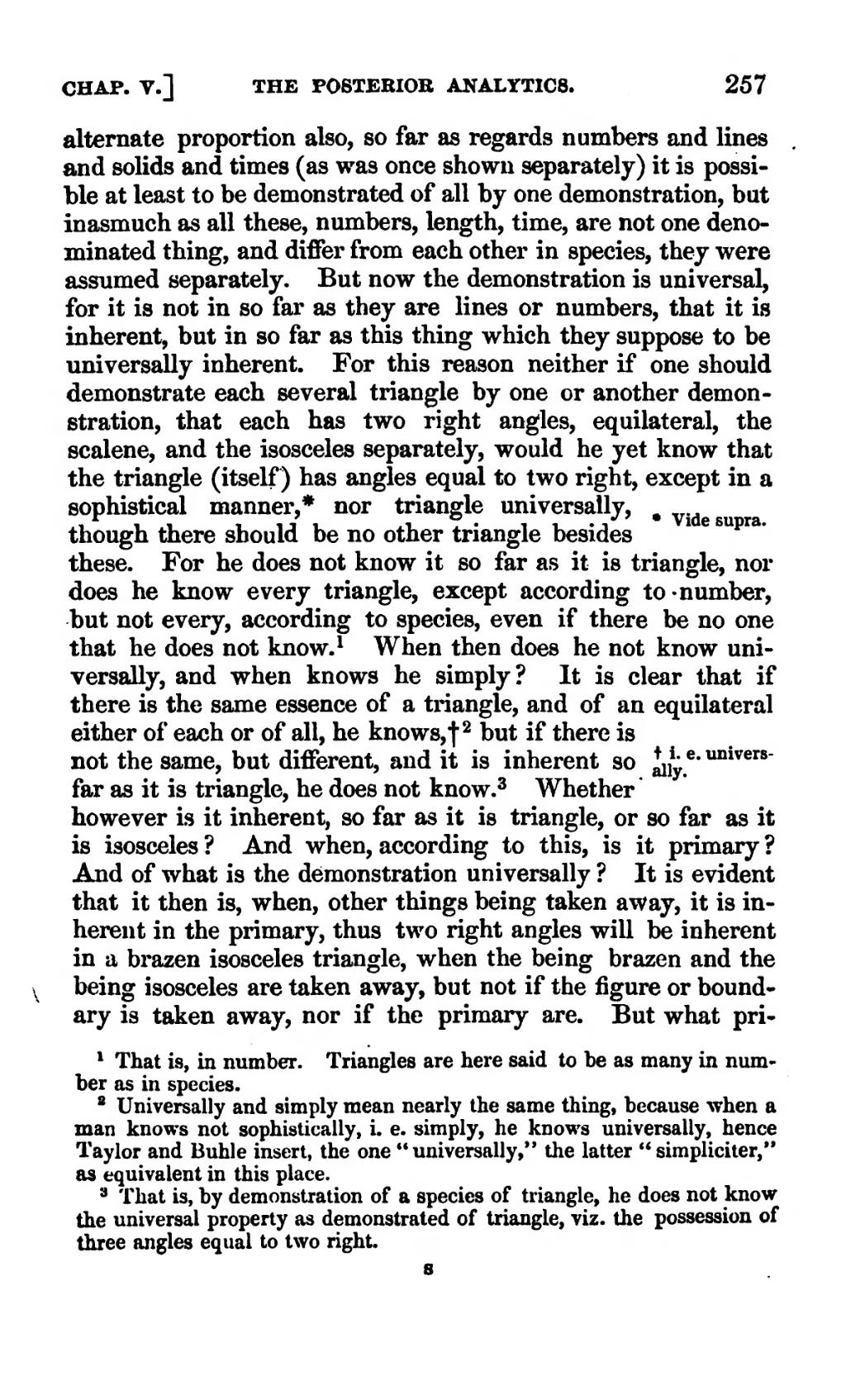alternate proportion also, so far as regards numbers and lines and solids and times (as was once shown separately) it is possible at least to be demonstrated of all by one demonstration, but inasmuch as all these, numbers, length, time, are not one denominated thing, and differ from each other in species, they were assumed separately. But now the demonstration is universal, for it is not in so far as they are lines or numbers, that it is inherent, but in so far as this thing which they suppose to be universally inherent. For this reason neither if one should demonstrate each several triangle by one or another demonstration, that each has two right angles, equilateral, the scalene, and the isosceles separately, would he yet know that the triangle (itself) has angles equal to two right, except in a sophistical manner, nor triangle universally, though there should be no other triangle besides these. For he does not know it so far as it is triangle, nor does he know every triangle, except according to number, but not every, according to species, even if there be no one that he does not know. When then does he not know universally, and when knows he simply? It is clear that if there is the same essence of a triangle, and of an equilateral either of each or of all, he knows, but if there is not the same, but different, and it is inherent so far as it is triangle, he does not know. Whether however is it inherent, so far as it is triangle, or so far as it is isosceles? And when, according to this, is it primary? And of what is the demonstration universally? It is evident that it then is, when, other things being taken away, it is inherent in the primary, thus two right angles will be inherent in a brazen isosceles triangle, when the being brazen and the being isosceles are taken away, but not if the figure or boundary is taken away, nor if the primary are. But what pri-
Page:O. F. Owen's Organon of Aristotle Vol. 1 (1853).djvu/275
Appearance

